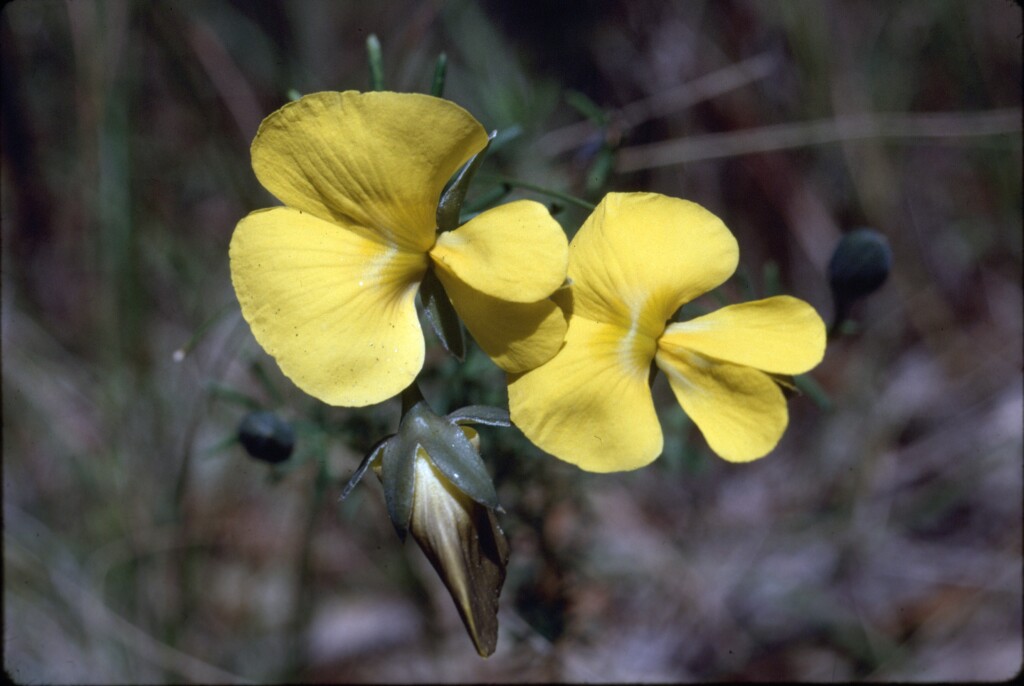Gompholobium
Small to large perennial shrubs; branches glabrous, pubescent or hirsute with spreading hairs. Leaves alternate, sessile or petiolate, simple, trifoliolate or pinnately compound with 5–25 leaflets (3–7-foliolate in Victoria); leaflets generally narrow, margins entire; stipules small or absent. Inflorescence racemose, terminal or rarely axillary, sometimes with only 1 or 2 flowers; bracts usually small, lanceolate; bracteoles small, lanceolate or bristly, inserted below base of calyx, sometimes absent; calyx tube short, 5-toothed, teeth lanceolate, more or less equal, longer than tube; petals shortly clawed, yellow, orange, bright red or orange-red; standard orbicular or reniform, longest; wings oblong, more or less falcate; keel obtuse, usually broader than wings; stamens free; ovary sessile or shortly stipitate, usually glabrous; style incurved, usually filiform; ovules 2–many. Pod more or less globose to obliquely oblong, turgid, subsessile to stipitate; seeds exarillate.
About 30 species, all endemic to Australia and found in all States.
Willis (1973) records Gompholobium scabrum Sm. (as Burtonia scabra R. Br.) from along the Dargo Road near Gladstone Ck in Gippsland. The few existing plants are possibly the result of an introduction by early miners from the Western Australia goldfields and the species is probably not truly naturalized. It is an upright shrub to about 1 m tall with trifoliolate leaves and showy red to purplish flowers.
Jeanes, J.A. (1996). Fabaceae. In: Walsh, N.G.; Entwisle, T.J., Flora of Victoria Vol. 3, Dicotyledons Winteraceae to Myrtaceae, pp. 663–829. Inkata Press, Melbourne.
 Spinning
SpinningWillis, J.H. (1973). A handbook to plants in Victoria. Melbourne University Press, Carlton.


